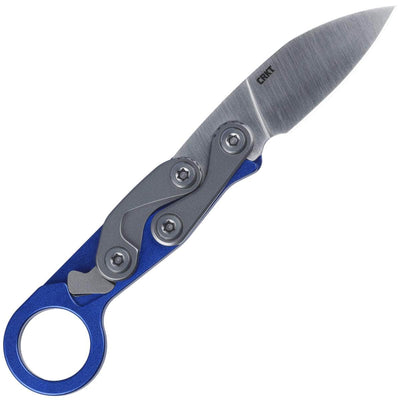Your cart is empty.
The Three Knives You Need in Your Kitchen
If you’re just beginning to explore the realm of cooking, your kitchen can be a scary place. Stocking your shelves and drawers with the right pots, pans and utensils should be the first step to acclimating yourself in the culinary territory. Because nearly every meal involves slicing, dicing, cutting or chopping, make kitchen knives your first purchase. Don’t know where to start? Here are the three most essential knives, their functions and how to use them.

Chef's Knife
The chef's knife may be the most important purchase you will ever make for your kitchen. The blade can very between 6 and 14 inches in length, but is generally somewhere in the middle about eight inches. Blades tend to be 1½ inches at their widest width and triangular in shape.
Their utility makes chef’s knives so important. They can do everything from finely dicing onion to quickly chopping vegetables to cutting through bone.
To use the blade properly, most chefs recommend gripping the handle with all four fingers and thumb wrapped underneath. The blade is shaped to easily rock on the cutting board, and this grip allows the full utilization of this movement. For a more precise movement, you can “choke up” on the knife, and hold the blade itself with your thumb and pointer finger and wrap your other three fingers just below the bolster (the thick part intersection of the knife blade and the handle).
Paring Knife
The blade of the paring knife is between 2 ½ and 4 inches and is triangular in shape. The handle is small and should fit comfortably in your hand.
Many cooks liken the paring knife to an extension of your hand, as it is has the precision for any delicate or detailed job. This can be peeling fruit, slicing small amounts of vegetables (for large amounts, use the chef’s knife), coring an apple, or venting a pie.
Unlike other knives, it is not necessary to use the parer on a cutting board. Because the small handle gives the cook maximum control of the blade, the knife can used while held aloft. This is great for peeling a fruit or vegetable. For other tasks, the knife is held like the chef’s knife.
Serrated Edge Knife
A serrated knife is any with a tooth like edge to its blade. This ranges from steak knives to bread knives, so the length and width of the blade vary.
Serrated knives are perfect for cutting through foods with a hard exterior and a soft interior. The teeth allow clean cuts through the outside, but won’t crush or rip the interior. A bread knife is a great option for your first serrated knife purchase. The long length ensures you can quickly and cleanly slice through cakes and breads, while still being able to tackle the smaller items like tomatoes and citrus fruits.
These knives work similarly to a saw, so mimic that motion. Simply go back and forth and the knife should do the rest without you exerting much effort.



















